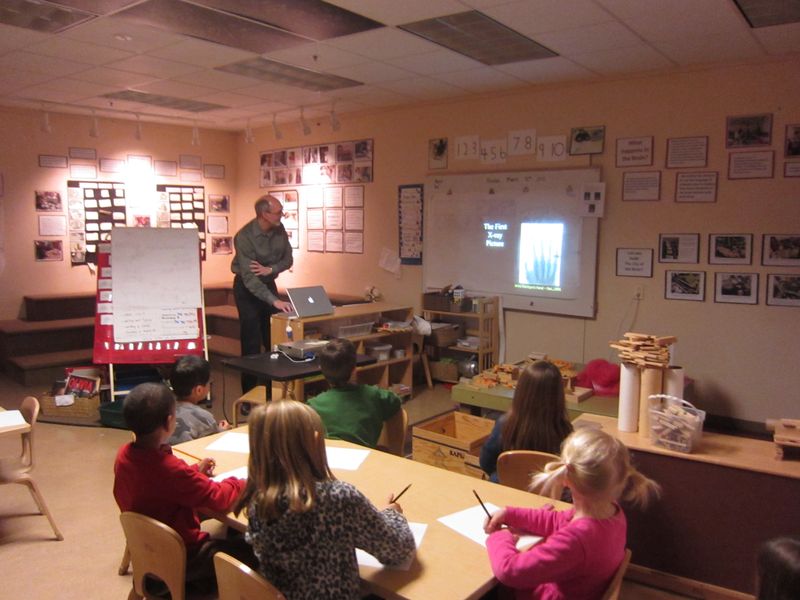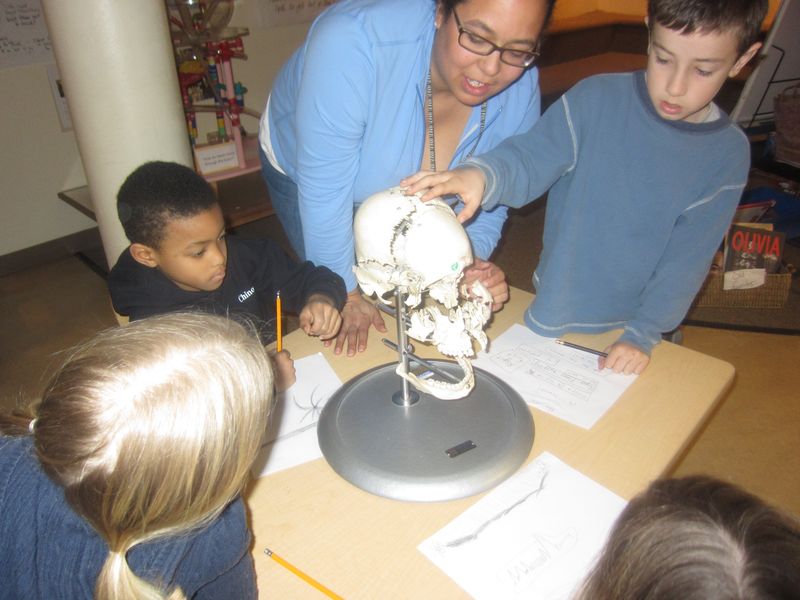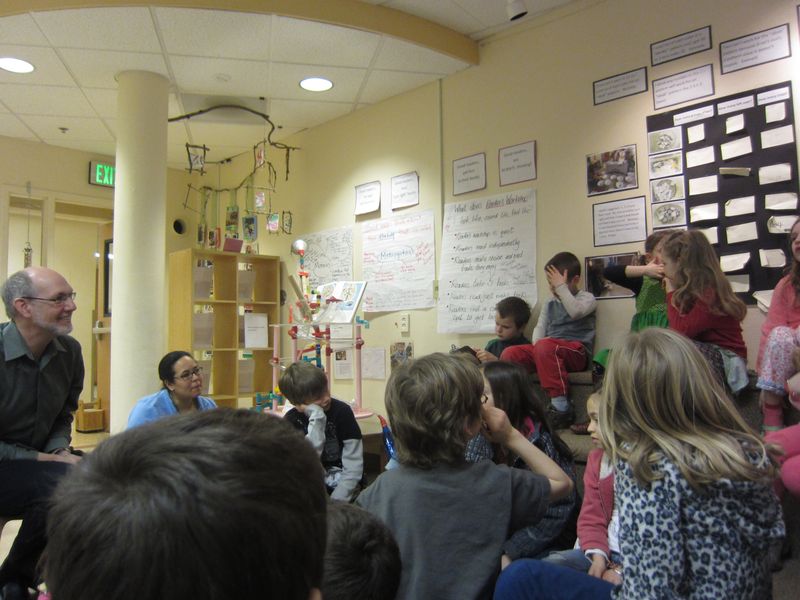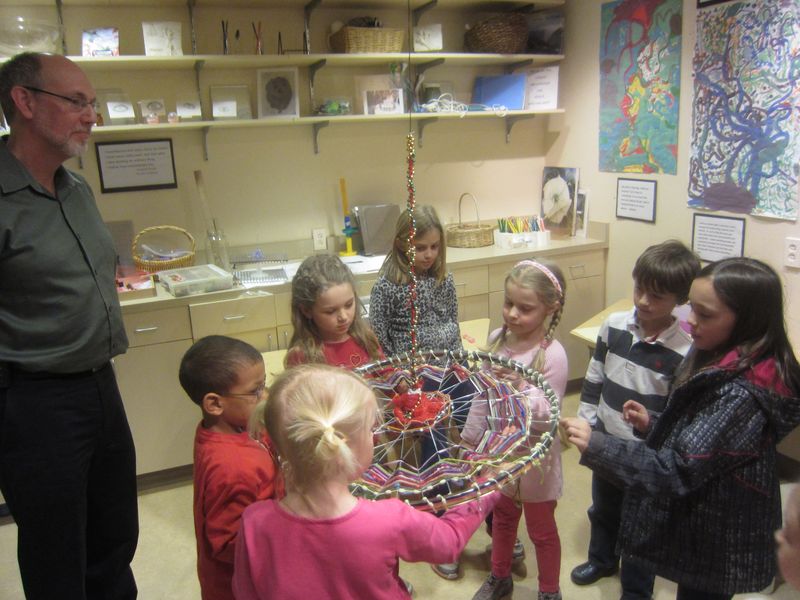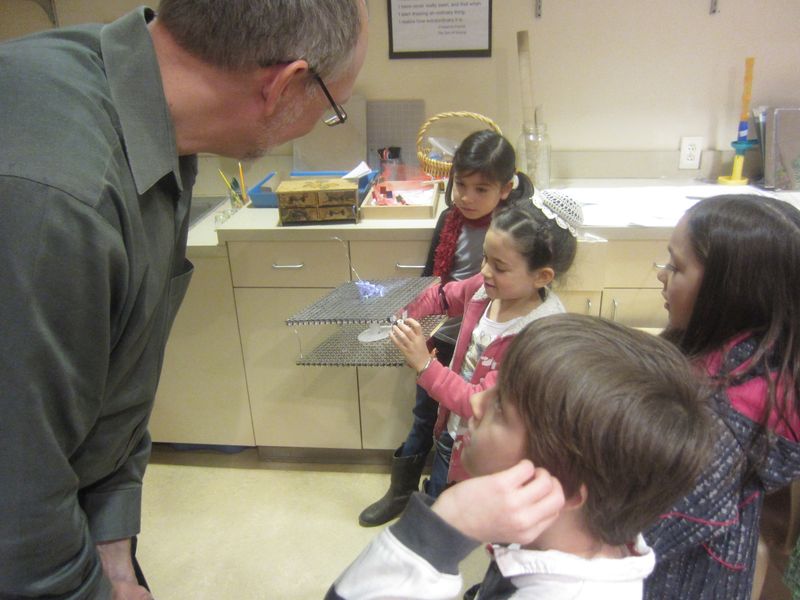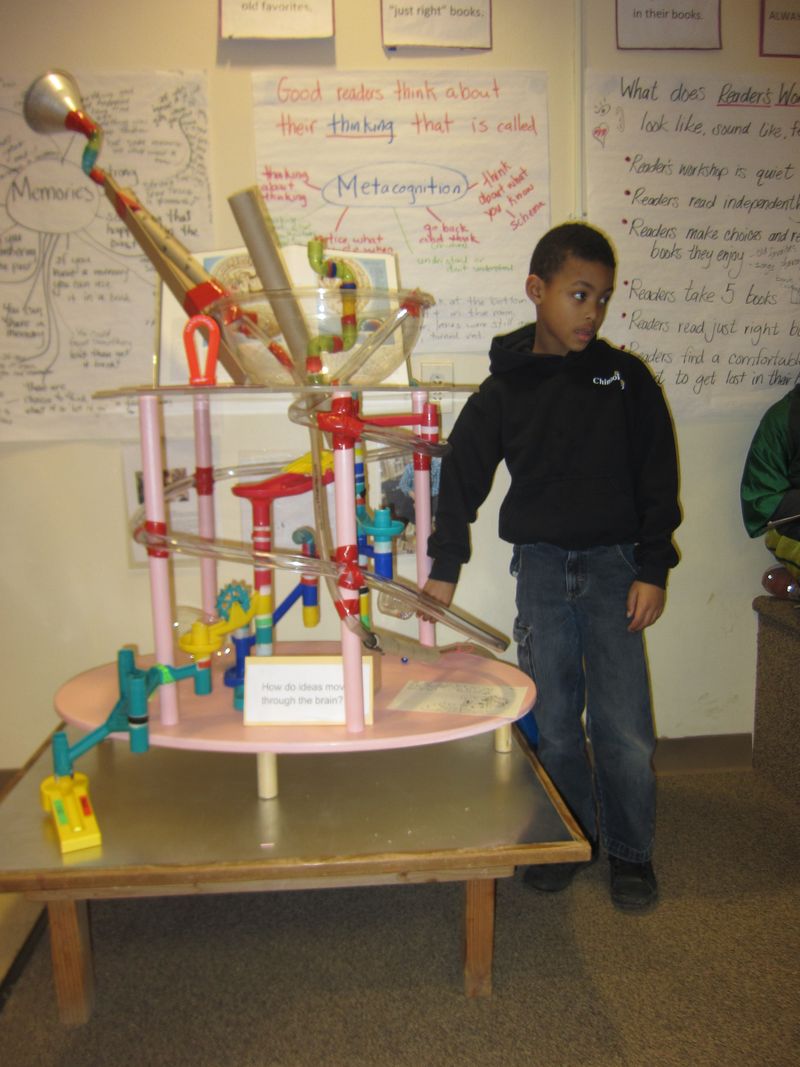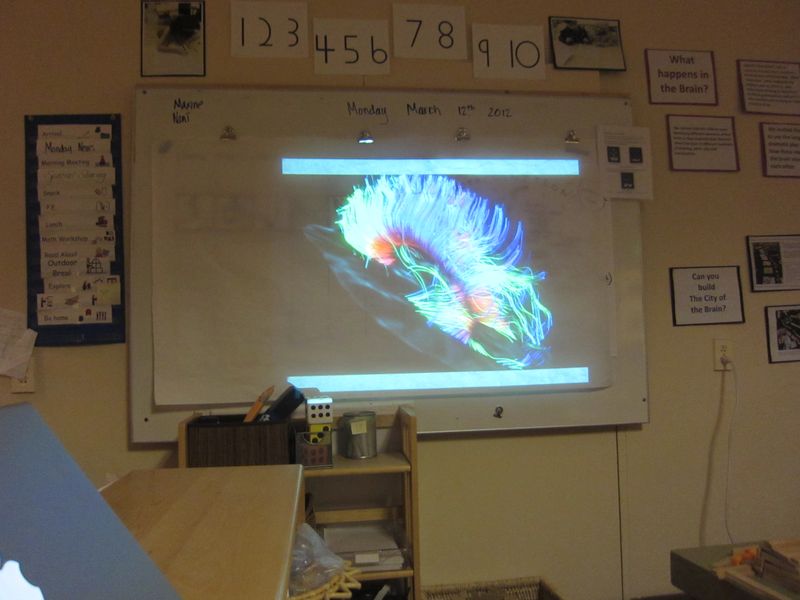What happens when scientists collaborate?
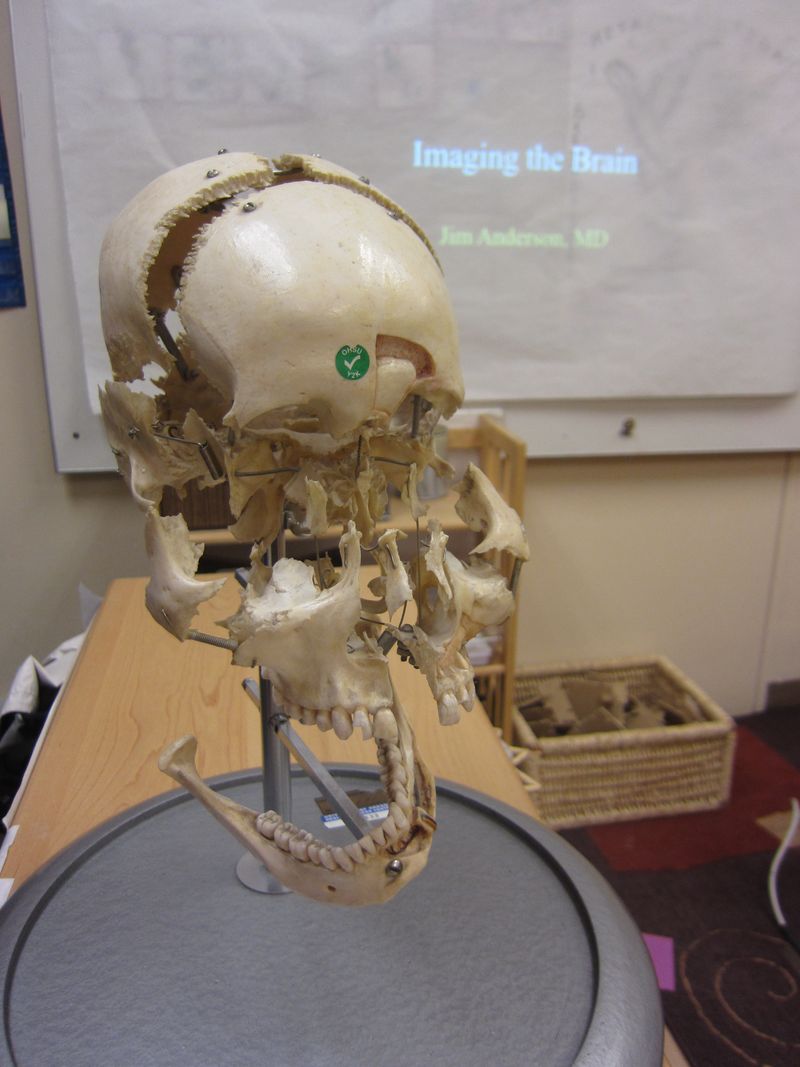
You know how sometimes, when a great idea hits the air everyone in the room can feel it? Well that happened to us some time ago when an Opal 2 student, deeply engaged in our brain study suggested, "Maybe we could invite a scientist in to share our theories and help us think about a new invention…" A contagious excitement spread through the Opal 2 researchers and the hunt was on for "a scientist" who could collaborate with us – and we do mean collaborate with us. We teachers stood in awe of the theories and ideas already put forth by the students. We wondered how we could both learn from an "expert" and insure that the children and their ideas were honored? We wondered how to inspire curiosity and invite engagement from both students and scientist as co-creators of an expeirience that would ignite the interest we already saw percolating? Our scientist had to be special…
Just before spring break, at long last we recieved a visit from a friend that we fondly refer to as … "the scientist." Known to others as Dr. Anderson OHSU radiologist, "our scientist" visited and invited us into to wonder right along side him about our brains. I wanted to share some small pieces of our conversation and sharing. Truly it was a marvelous collaboration.
What is the brain made of? D. R
Cells – 5 kinds of cells millions and millions of cells Dr. Anderson
What protects it? S.M.
The skull is around your brain to protect it. But you still have to be sure to wear your helmet! – Dr. A.
Can you tell me about some of your research? – Dr. A.
We've used normal materials and changed them into the brain like in the studio we've turned a wheel into the dreams… P.B.
Wow, that's just the work we do. When we have a big question we break it into parts and create models… Dr. A.
How does…why does your brain help you think? T. P.
That's just what we as scientists study. How does a thought come to be? – Dr. A.
(At this point about half of the class raise their hands to explain their theory on how a thought comes to be and he awknowledges their engagement with admiration)
Several students explain pieces of the model of thinking, memory, emotion and ideas.
Sometimes children have some of the best thoughts about how things work because you are able to think about the things you are learning in a different way. – Dr. A.
Do you remember that we were inspired to invite a scientist to visit because we were interested in inventing something? – Erin
Oh yeah now that you reminded me. D.R.
So I'm wondering if there is a big question that we could maybe help brain scientists study more about through an invention of some kind? – Erin
Well, there is still so much to learn about connection and how everything in the brain connects together. It's the connections that make the brain work. LIke how you have the different marbles in your model. How would different marbles come together? - Dr. A.
Like how memories and lerning connect and a new idea comes! M.B.
We are making new ideas right now! P.K.
Indeed we were and have continued to grow our theories about the heart, soul, brain and emotions. Next up – connections… stay curious!


